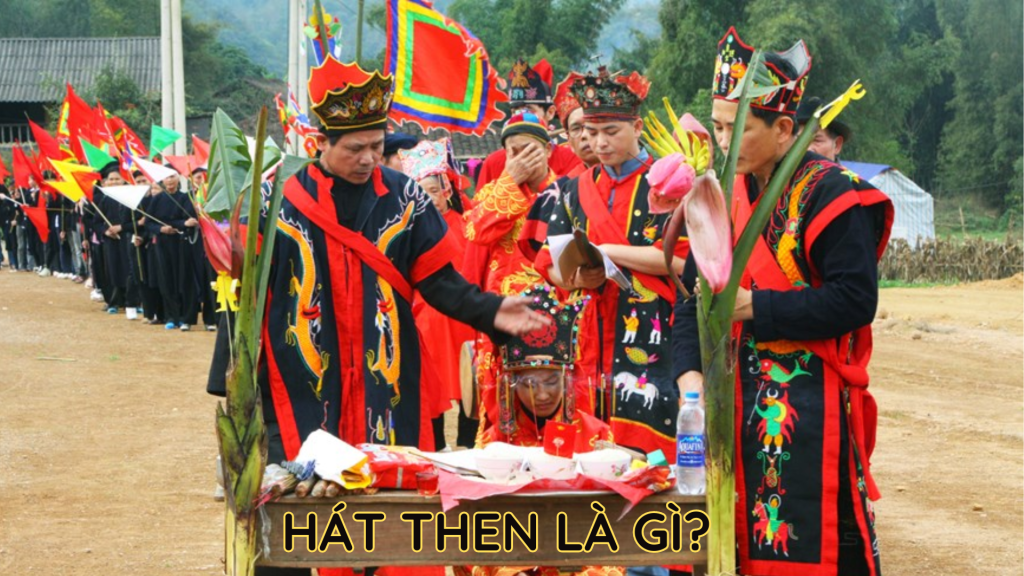What is Hát Then?
Hát Then is a unique form of folk performing art practiced by the Tày, Nùng, and Thái ethnic groups in the northern mountainous regions of Vietnam. It is especially popular in provinces like Lạng Sơn, Cao Bằng, Hà Giang, and Tuyên Quang.
Hát Then combines singing with đàn tính
Hát Then performances often accompany traditional musical instruments like the đàn tính (a stringed instrument) and rhythmic clapping sticks. The lyrics of Hát Then songs typically narrate mythical stories, express religious beliefs, or convey personal emotions, dreams, aspirations, and cultural values of the community.
Beyond being a form of entertainment, Hát Then plays a vital role in spiritual and cultural rituals, such as prayers for peace, rain, or during various festivals. This art form reflects the life stories, village tales, and even themes of love, funerals, and weddings. It is a precious intangible cultural heritage, recognized by UNESCO as an Intangible Cultural Heritage of Humanity.
The term “Then” is derived from the word “Thiên” (天, tiān) in the Zhuang language, meaning “heaven.” The Zhuang people in China, along with the Tày and Nùng people, consider Hát Then as a means to communicate with Heaven.
Origins and Significance
Historical Formation According to folklore, Hát Then originated from ritual ceremonies involving deities and ancestors. It was initially a sacred ritual chant intended to convey messages from humans to supernatural beings or to seek protection from the heavens. Originally, Hát Then was performed during Then rituals, where the Then master (thầy Then) acted as a bridge between humans and deities. Over time, Hát Then evolved into an independent performing art form, passed down and preserved through generations.
Spiritual Significance In many Tày, Nùng, and Thái communities, Hát Then is associated with important rituals such as prayers for peace, blessings, or marking significant life events like weddings or longevity celebrations. It is also used to guide the souls of the deceased to heaven or to seek prosperity and peace for the living.
Ritual of Expelling Bad Luck (Then giải hạn) The ritual of giải hạn aims to eliminate bad luck, ward off misfortune, and seek protection from deities and ancestors, helping participants overcome difficulties and receive good fortune. It is typically conducted when participants feel an ominous sign, suffer from prolonged illnesses, or face numerous adversities. The ritual is led by the Then master, who is believed to have the ability to communicate with the spiritual world and perform sacred rites to dispel negative influences.
The lyrics in the giải hạn ritual are often powerful, expressing pleas for divine protection and intervention to remove negative energies. The Then master conducts various rites, such as offering incense, presenting sacrifices, and reciting prayers to drive away evil spirits and misfortune, while praying for peace and good fortune for the participants.
Offerings in the giải hạn ritual usually include items symbolizing purification and the removal of negative elements, such as rice, salt, alcohol, and herbs. These offerings are carefully prepared and presented to the deities with reverence, hoping for their protection and blessing. The ritual is often held at the home of the person seeking giải hạn or at sacred places like temples or shrines. The duration of the ritual can range from a few hours to an entire day, depending on the complexity of the ritual and the condition of the participant.










